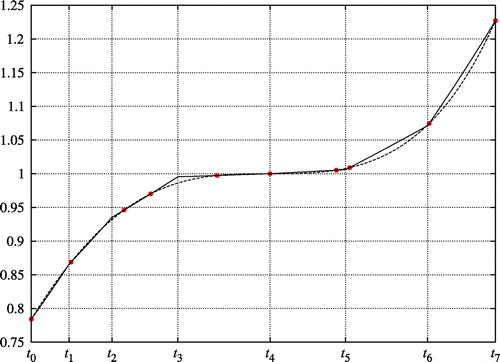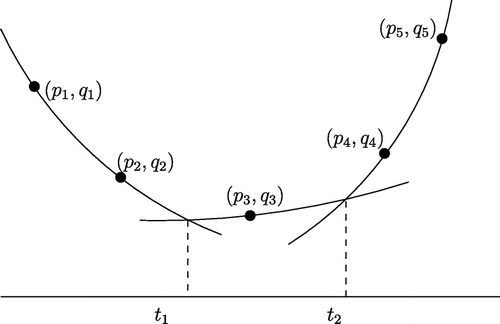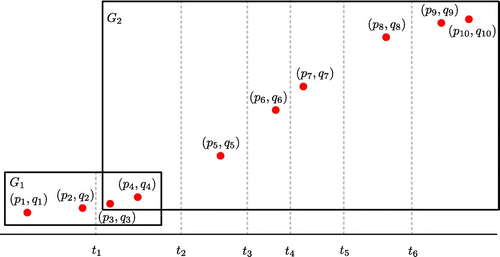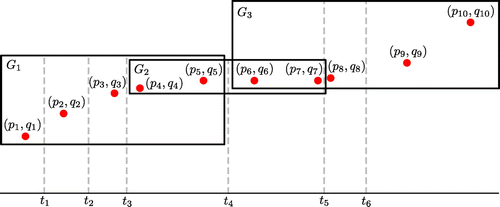Figures & data
Figure 1. For given data with can be uniquely determined in case (a), whereas
cannot be determined in case (b).

Figure 3. The first and last intervals both contain two data points, whereas the others, only one data point (T1).

Table 1. Simulated data in data set 1.
Table 2. Minimization results for the functional (18) for data-set 1.
Figure 5. The dashed line indicates the exact solution of (Equation2020
20 ), the solid line is the derived solution and dots represent data points.
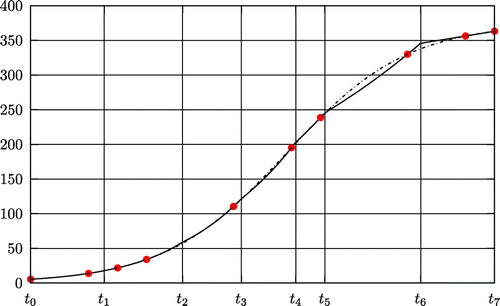
Table 3. Simulated data in data-set 2.
Table 4. Minimization results for the functional (18) for data set 2.
Figure 7. The dashed line indicates the exact solution of (Equation2121
21 ), the solid line is the derived solution and dots represent data points.
